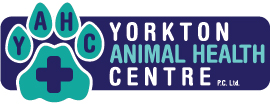Library
-
Systemic lupus erythematosus (SLE) is an immune-mediated disease in which a dog's immune system begins to attack her own tissues.
-
Following certain steps and offering rewards and praise instead of reprimands will put a positive spin on a dreaded task. This will help make nail trimming a more pleasant experience for both you and your dog. If all else fails, do not hesitate to contact your veterinarian for further help.
-
Tapeworms are parasites that infect the gastrointestinal tract of dogs, other animals, and humans. Several types of tapeworms are known to infect pets, but the most common species observed in dogs is Dipylidium caninum, which is transmitted through fleas. Risk factors, clinical signs, treatment, and prevention are explained in this handout. Other, less common types of tapeworms that affect dogs and humans are also covered.
-
Nebulization and coupage are used in patients with a variety of lung conditions and can be performed by veterinary staff and pet owners. Nebulization may be used to deliver a variety of medications to the lungs in cases of infection, allergic lung disease, or other lung conditions. Coupage is often recommended for patients with pneumonia or bronchitis.
-
Telmisartan is an angiotensin receptor blocker (ARB) used to treat high blood pressure in cats and off-label to treat kidney disease in both cats and dogs. This medication is given by mouth in the form of a liquid or tablet. It may be given with or without food but is better absorbed if given on an empty stomach. Side effects may include vomiting, diarrhea, lack of appetite, low blood pressure, and decreased energy. There are several drugs that can contribute to adverse effects when given with telmisartan. Be sure to tell your veterinarian about any medications (including vitamins, supplements, or herbal therapies) that your pet is taking. If you suspect an overdose or an adverse reaction to the medication, call your veterinary office immediately.
-
Testicular tumors are generally not aggressive and have a low metastatic rate. Pets with undescended testicles (cryptorchid) are predisposed to the development of certain testicular tumors. Hyperestogenism is possible with Sertoli cell tumors. In any cryptorchid pet, removal of both testicles should be pursued. Intraabdominal tumors in cryptorchid pets may cause lethargy, decreased appetite, and fever. Standard staging is recommended in all cases, including a rectal exam. Surgery is typically the treatment of choice and may be combined with radiation therapy or chemotherapy if metastasis is evident.
-
Diarrhea can be a simple diagnosis or a complex one. A thorough history and physical exam may be enough to determine the cause; however, in less obvious cases, various tests may be needed. Pending the results, a treatment plan can be developed.
-
Various conditions can cause increased thirst (polydipsia) and urination (polyuria). Based on your pet's history and a thorough physical examination, your veterinarian will recommend diagnostic testing to determine the cause. This handout describes several tests that can be performed along with the conditions the results from these tests may indicate.
-
This handout discusses Lyme disease in dogs, primarily the issue of methods of testing for the disease.
-
In pets, pallor is usually detected as a loss of color from the gums and inner eyelids and can be a sign of anemia or poor circulation. A pet’s history of illness and a complete physical examination are important in determining the cause of the pallor. However, your veterinarian may also recommend doing screening tests such as a complete blood count, serum biochemistry and urinalysis. Additional tests may also be needed.


